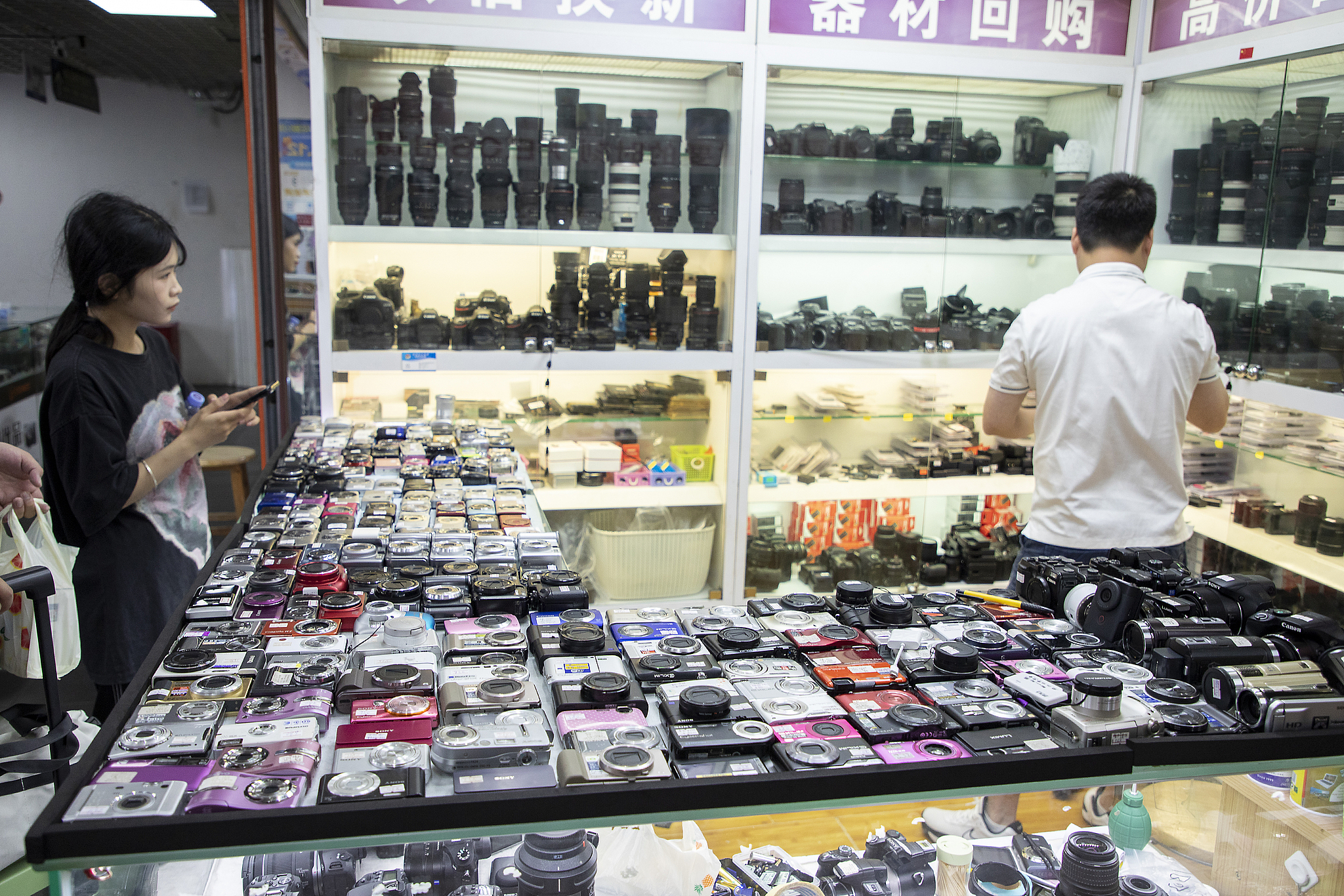
A visitor experiences augmented reality (AR) glasses at the 21st China (Shenzhen) International Cultural Industries Fair in Shenzhen, south China's Guangdong Province, May 23, 2025. /CFP
Editor's note: Yi Xin is a current affairs commentator based in Beijing for CGTN. The article reflects the author's opinions and not necessarily those of CGTN.
Tucked away in the factories of Shenzhen, where soldering irons buzz and machines hum, a quiet "revolution" is unfolding – one measured not in headlines but in millimeters of glass and microns of calibration.
Recently, a new type of panoramic camera has burst onto the scene. Equipped with the latest self-developed technologies of panoramic image capture, image processing, and anti-shake function, this thumb-sized camera can capture a 360-degree view from a single position and offer multiple visual effects for editing. With a simple swing, its selfie stick can extend to three meters in length, easily simulating drone shots without showing the stick in the frame.
Behind this state-of-the-art gadget is the story of China's optical lens industry through which the world can better see the country's technological advancement.
From assembly lines to innovation hubs: Shenzhen reinvents itself
Shenzhen, once famed for low-cost electronics manufacturing, is now pivoting towards high-end innovation. With years of dedication, the city, now known as "City of Design" and "City of Makers," has developed one of the world's most complete optical lens ecosystems.
Local enterprises are the ones pushing the envelope. They've taken Chinese optics beyond basic phone lenses and into emerging frontiers such as automotive camera systems including Advanced Driver Assistance Systems and the Driver Monitoring System, lightweight AR/VR lenses, and industrial vision modules.
Meanwhile, a full-chain innovation system has been formed ranging from technological invention to user experience enhancement and market promotion. Enterprises are focusing more on the added value of their products, i.e., providing users with comprehensive, smart imaging solutions such as AI editing and cloud storage platforms, and enabling users to easily produce high-quality professional videos.
Moreover, the rise of China's optical industry represents a broader shift in manufacturing from volume to value and from imitation to innovation.

A stall selling cameras and lenses in Huaqiang North subdistrict, Shenzhen, south China's Guangdong Province, June 30, 2024. /CFP
Tiny lenses, giant leaps: A glimpse into China's smart manufacturing
In the past, "made in China" was often associated with standardized products coming off assembly lines. Yet now, China's smart manufacturing is reshaping the landscape of globalized industries.
Every step matters. Though relatively small in scale, the optics industry is monumental in implication. It reflects the fact that the evolution of traditional manufacturing in the digital age is all about unlocking efficiency with algorithms and igniting innovation with data.
Step into a modern Chinese factory, and you can see robotic arms weld with ballerina precision, automated guided vehicles (AGVs) glide silently under digital orders, and production lines flow like rivers with data connected through a digital thread. Behind all these is the "smart brain" of industrial internet platforms – processing real-time data, predicting maintenance needs, and optimizing production rhythms.
Furthermore, such upgrades also bring a change of role. From smart devices in consumers' hands to cutting-edge machinery in infrastructure worldwide, China's smart manufacturing plants innovation deep into the high-value soil of the global industrial and supply chains. China is no longer the "world's factory," but an "engine" driving global innovation.
'New' plus 'quality': the engine driving our future
The shift also reflects China's commitment to new quality productive forces, a term frequently emphasized in national economic planning. Fueled by innovation and featuring high efficiency and quality, it steers away from sole dependence on resource consumption and demographic dividends, and aims to create a more robust and sustainable future.
"New" lies first in the core of innovation. This is no longer about patching up existing technologies; rather, it's about unleashing the full potential of original and disruptive sci-tech innovation. Today, AI is reshaping the logic of manufacturing at an unprecedented pace: controlled nuclear fusion brings the dawn of clean energy, and bio-manufacturing rewrites the basic rules of material production. Each major breakthrough acts like a potent catalyst injected into the economy.
"Quality" is reflected in the leapfrog development and optimization of the economic structure. At its heart lies a profound revolution in production factors. Growth is not solely driven by traditional factors like land, labor and capital, but increasingly by new factors: knowledge, technology, and data. This also leads to the systemic restructuring of the industrial system. The digital economy thrives, integrating deeper with the real economy. Green and low-carbon development is moving from concept to common practice. Such paradigm shifts manifest as a significant leap in total factor productivity – greater economic value can be created with fewer resources consumed and lighter environmental footprints.
As a key variable reshaping the global economy, new quality productive forces will play a major role in breaking through growth bottlenecks, opening new frontiers for development, and enhancing public well-being. Shenzhen's story of small lens is one step in the course of China's modernization. As the country continues to sharpen its focus, Shenzhen's story of small lens is one step in the course of China's modernization.
As the country continues to sharpen its focus, the world will benefit more from its view on new development.
(If you want to contribute and have specific expertise, please contact us at opinions@cgtn.com. Follow @thouse_opinions on X, formerly Twitter, to discover the latest commentaries in the CGTN Opinion Section.)
阅读原文:https://news.cgtn.com/news/2025-08-11/How-Shenzhen-s-optics-industry-reflects-China-s-technological-rise-1FKR4FMU3m0/p.html